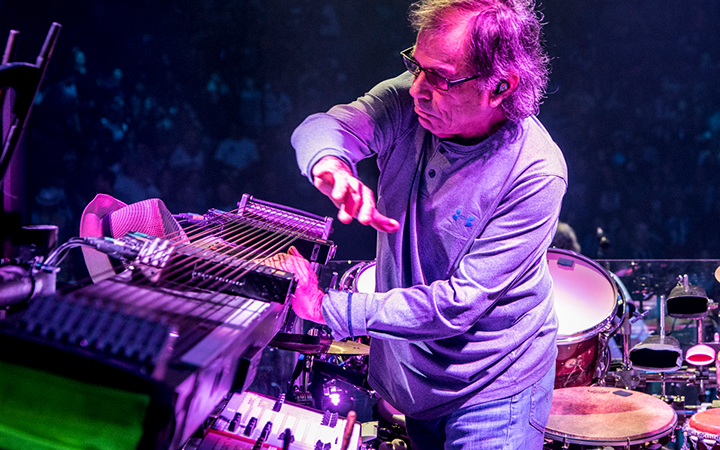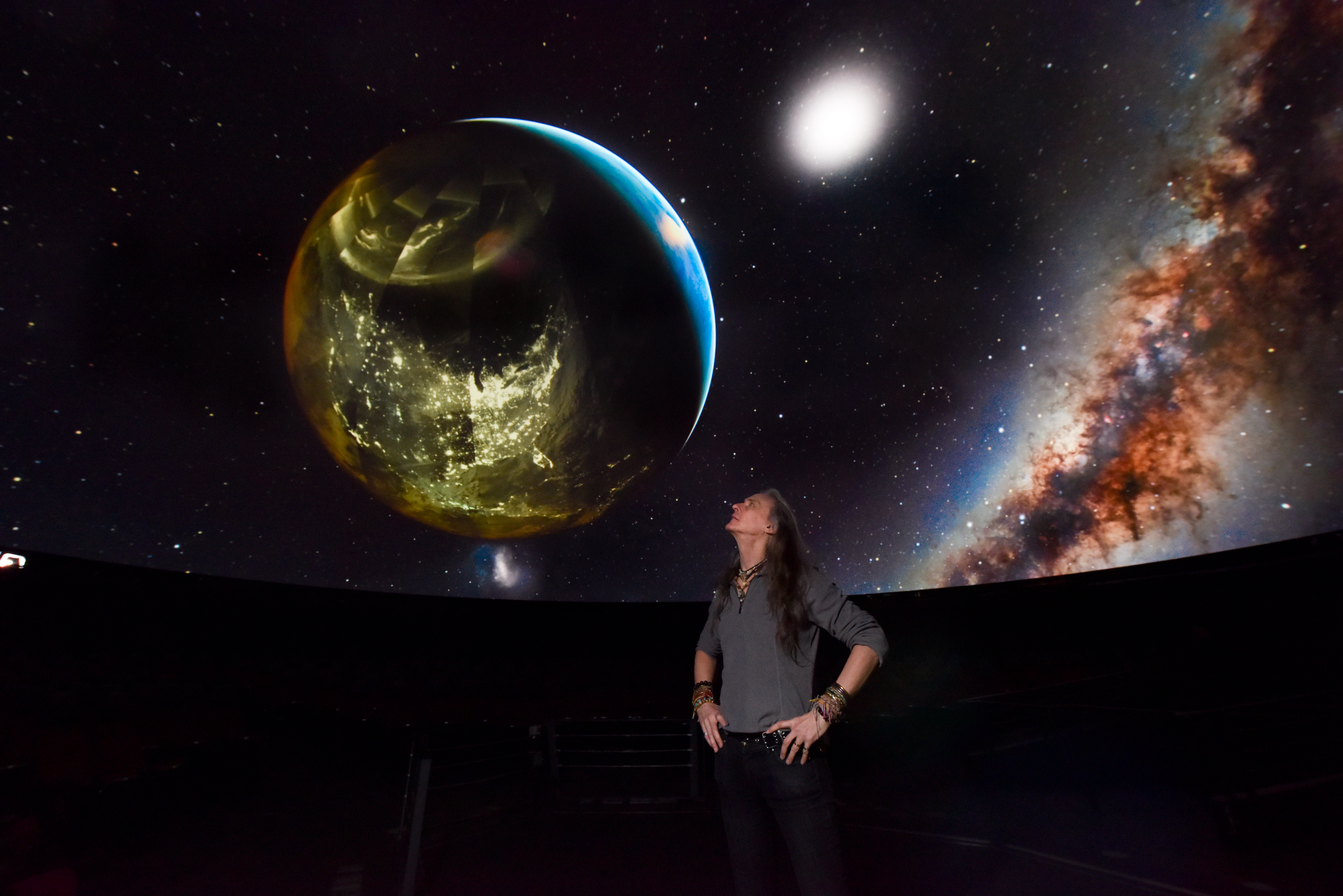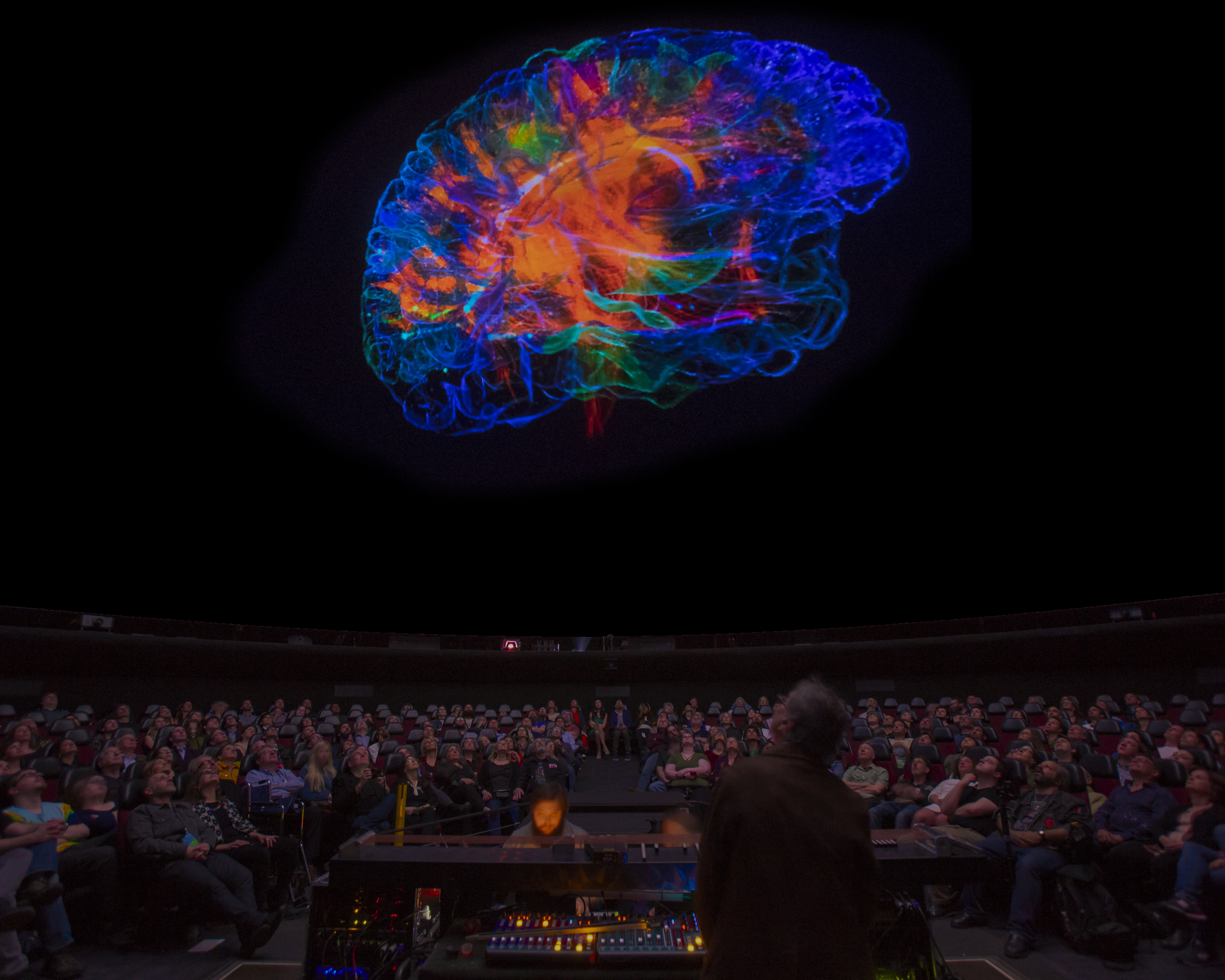Listen as the Grateful Dead's Mickey Hart Plays Rhythms of the Universe
The music of the Grateful Dead has taken its listeners on numerous epic trips since the band formed in 1965. Now, the band's legendary drummer Mickey Hart, with the help of the American Museum of Natural History (AMNH), has taken audiences on the "farthest journey" ever — to the Big Bang and back — in a planetarium show called "Musica Universalis: The Greatest Story Ever Told."
The show, which was a special two-day only event at AMNH in April, "tells our incredible journey through time," according to an artist statement signed by Hart. "It connects us with the tumultuous vibrations that were born 13.8 billion years ago in an inferno of noise and magnificent chaos."
Hart worked with the American Museum of Natural History's Director of Visualization Carter Emmart to develop the presentation. For the visuals, they used an "anthology of AMNH Space Show content," Emmart told Space.com in an email. Meanwhile, Hart used a strange percussive instrument called "the Beam" to compose the soundtrack. [In Photos: Mickey Hart's "Musica Universalis: The Greatest Story Ever Told" Planetarium Show]
The Beam "is a large (8 foot in length) aluminum I-beam (actually a "C" shaped beam facing down with the strings across the flat outside-top surface) strung with 13 bass piano strings all tuned to the note of D (a Pythagorean mono-chord at various octaves)," and a variety of pickups and amplifiers, according to Mickey Hart's website. It produces sounds that I can only describe as uber-cosmic. (You can hear it in action in the clip of the planetarium show above.)

Hart performed the soundtrack live using the Beam during a press preview of the show that I was fortunate enough to attend at AMNH's Hayden Planetarium at the Rose Center for Earth and Space in New York City on April 12.
During a Q&A session that immediately followed, Hart said that "the Beam was invented by Pythagoras," since it is a derivative of the instrument that the ancient Greek philosopher was known to play, who is also well-known for his achievements in math and music.
According to Emmart, the mash mix of visualizations included selections from the following planetarium space shows: "Big Bang (2010)," "Dark Universe (2013)," "Cosmic Collisions (2006)," "All We Are (2010)," and a recent remake of a Milky Way galaxy scene from "Passport to the Universe." New visualizations of Earth from space were created using the NASA-funded "OpenSpace" program. [The Universe: Big Bang to Now in 10 Easy Steps]
Get the Space.com Newsletter
Breaking space news, the latest updates on rocket launches, skywatching events and more!

In a stab at raising awareness of Earth's changing climate, the new visuals were used to highlight the damage humans are doing to Earth, specifically showing the smog over China, the deforestation of the Amazon rain forest and mountaintop removal mining in the Adirondacks, as seen from space.
Also, the planetarium showed off an incredible brain-activity visualization Hart composed music to as well. "The brain is like jazz, always improvising," he said.
In the post-show Q&A, Adam Gazzaley said it showed "real-time visualizations of rhythms" associated with Hart's neurological activity. Gazzaley, who created the visualization using scans of Hart's brain, is a professor of neurology, physiology and psychiatry at the University of California, San Francisco, as well as the founder and executive director of Neuroscape.

Neuroscape is working on the frontier of what Gazzaley calls "digital medicine" and is "building a bridge between neuroscience and consumer friendly technologies," according to the company's website, as well as aiming to support the treatment of brain disorders.
To prime the attendees of the "Musica Universalis" press preview before the main event, the show's producers arranged a walk-through of AMNH's "Our Senses" exhibit, which takes museumgoers through a variety of exhibits that require the use of all five of the human senses. During the exhibit, Mickey Hart's latest album "RAMU" was played on the stereo system.
Between the stunning visuals and cosmic soundtrack, "Musica Universalis" was certainly a sensory experience itself — and that was part of the plan as it was developed.
According to Emmart, "Mickey spurred us on to tap this broad vision of rhythm driving the cosmos at all scales so we could immerse ourselves in the pulse and perception of the universe — a trip still very much in progress."
And after this amazing experience, I have to agree with the sentiments of the Grateful Dead's "Truckin'" lyrics: "What a long, strange trip it's been."
Follow Steve Spaleta on Twitter or Facebook. Follow us @Spacedotcom, Facebook and Google+. Original article on Space.com.
Join our Space Forums to keep talking space on the latest missions, night sky and more! And if you have a news tip, correction or comment, let us know at: community@space.com.

Steve Spaleta is Space.com's Senior Producer. Since 2007, Steve has produced and edited space, science and entertainment-related videos for Space.com. He is also the producer/writer/editor of Space.com's CosMix series on space-enthused artists. He studied psychology at the State University of New York at Stony Brook and is originally from Zadar, Croatia by way of Astoria, NY. To see Steve's latest project, follow him on Twitter and follow Space.com's VideoFromSpace YouTube Channel.









